|
|
 |
|
 |
| |
Late Pre-Production |
|
| |
|
|
| |
Back
to "Machine Types" |
|
 |
|
|
| |
|
|
 |
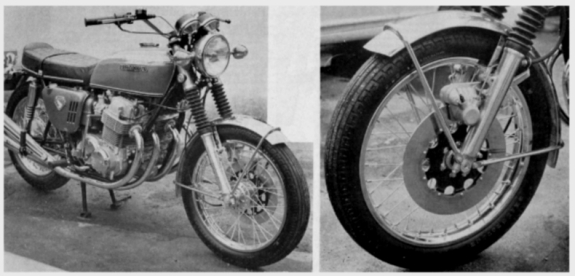 |
|
 |
|
|
| |
CB750-2110/CB750E-2110 similar yet different to the Production models available for retail sale. Still used the steel upper brake line. Had side cover badges same as Late Production bikes. At least one was a dark green color as pictured in the January 1969, Las Vegas USA dealer convention (colour like later used on K1). Reportedly, there were 4 of these Late Pre-Production bikes sent to American Honda in Los Angeles in time for the January 1969 Las Vegas dealer convention and these bikes were ridden in the desert outside of Las Vegas. These bikes had the rectangular starter cover and crankcases like the Production models. Some of these Late Pre-Production bikes may have had a sandcast outer transmission cover. This Pre-Production transmission cover was completely different from both the Prototype models, but appears same as Production models. Had the 1 into 4 carb cable setup like Production bikes, the choke lever was some sort of a stamped steel part, not round stock like the Production models. Alternator covers on the Late pre-Production model, when looking down on the top of it or from the front, the round part housing the alternator (coils/magnet) had two different diameters, in other words the cover was not smooth from outside to inside of cover. The outer half of the cover was slightly smaller diameter and about half way into the cover the cover was raised or slightly larger diameter that mates to the crankcase it's self. Calipers were less finned than Production models. Note the flat type duck tail seat. |
|
 |
|
|
  |
Late
Pre-Production Machine pictured in "Motorcycle
Sport" April 1969 - Known as "The Brighton
Bike" |
|
 |
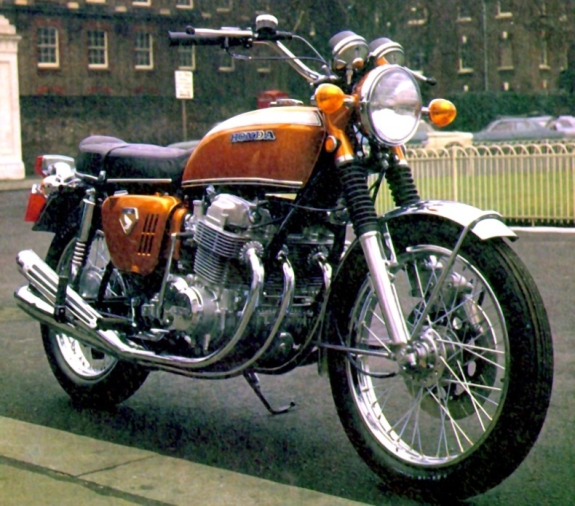 |
|
 |
|
|
| |
This late
pre-production bike actually the gold one shown at Brighton, England in 1969.
The bike still exists in England - in a private collection. It can be identified by the slightly more pointed than standard front indicator lens's fitted. Unfortunately, it was dismantled for restoration and has not yet been completed. It's frame and engine numbers are CB750-2110 / CB750E-2110.
The numbering system is certainly an interesting one. Early pre-production bikes were probably numbered in a sequence (four digits only) starting 1***, and the later type pre-production type (as per the Gold "Brighton show" bike - and of the type seen at Las Vegas) in a sequence (again four digits only) starting 2***. In summary, the pre-production bikes do have their own unique numbering system, which predates the system (seven digit) of the production bikes - the first true production spec bike would therefore of been #1000001. There are actually some pictures in a Japanese magazine of engine number 1000005 / frame number 1000010, certainly suggesting that very low serial number bikes were indeed sold.
This Gold bike reached England and along with an Olive Green bike
were shown at Brighton. After Brighton, nothing more is known of the Olive Green bike.
The Gold bike then went on to France, returned to the UK and was sold off.
There was a Red bike in Las Vegas. That bike has since been destroyed.
There was a Blue-Green bike, CB750 - 2113 - CB750E - 2113 from brochures of the time. That bike was recently sold at auction and will be featured on our site in detail in the near future showing the substantial differences in both the major and minor components when compared to a production bike. |
|
|
|
|
|
|
|
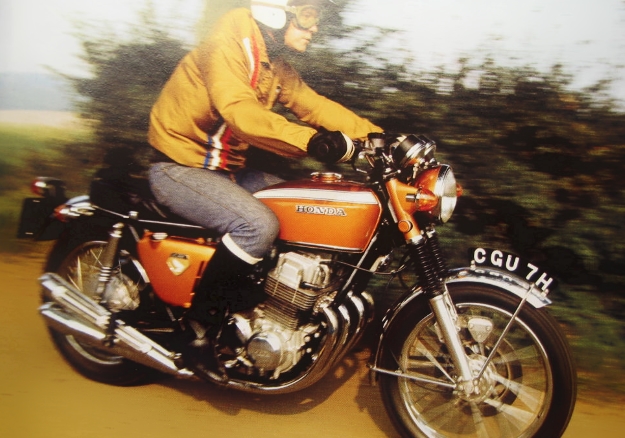 |
|
 |
|
|
| |
The Earl of Denbigh, the first owner of the Gold bike was actually President of the UK motorcycle retailers association (or similar) back then, hence no doubt how he was able to buy the bike. It is almost certain he took delivery in September of 1969. The bike was ridden on The Isle of Man during June, whilst still fitted with the high bars, so it would appear that the odd replacement master cylinder was definitely fitted at a time when several thousand sandcasts had already been built.
The other "give-away" is the registration number. CGU 7H is its UK license number (which it still has today - they are allocated for the life of the vehicle, and are rarely owner transferred.) The last letter represents the year during which the vehicle was UK registered. The registration year actually runs 01st August of one year through to 31st July of the next year, at which time they increment the letter suffix. In actual fact, CGU 7H was issued on 4th September 1969, hence the picture showing it being ridden with the flat bars was taken after that date. The registration would have been allocated as a part of the "prepping" it for sale process during which the bars / master cylinder change occurred. When previously press tested (for example on the Isle of man during June of '69, it would have had a temporary "trade" licence plate fitted.
You may also note the rear light is an oval one, and the light bracket also differs - these are believed to be CB450 twin parts fitted for reasons of compliance with UK "motor vehicle construction and use" regulations. |
|
| |
|
|
| |
More
fantastic images of the Late Pre-Production machines. A very
comprehensive gallery of the blue - green bike will be added to the
site in the near future. |
|
| |
|
|
| |
|
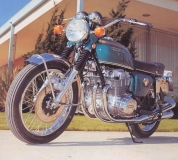 |
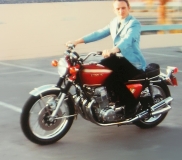 |
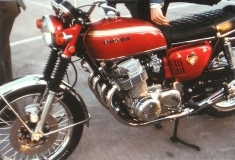 |
|
Click Image to Zoom |
Click Image to Zoom |
Click Image to Zoom |
|
|
|
|
|
|
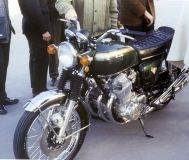 |
|
|
|
Click Image to Zoom |
|
|
|
| |
|
|
| |
|
|
 |
Back
to "Machine Types" |
|
|
|
|
|
| |
|
|
| |
|
|
| |
|
|
|